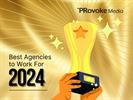Paul Holmes 10 Dec 2001 // 12:00AM GMT
For thirty years the Chicago Bears sought public funding to renovate their crumbling Soldier Field football stadium. While the Chicago landmark’s towering columns appeared strong, over three decades the stadium had fallen into deep disrepair.
Despite the apparent need for a total overhaul to the stadium, crucial state money for the job eluded the Bears much in the same way as the championships they sought.
Even with a Super Bowl Season in 1985, the Bears continued to fumble their chances in the political arena, failing to win funding for the badly needed renovation.
Historically, The Bears lacked the savvy needed to connect with key lawmakers in a convincing way. Team leadership also needed to create a grass-roots effort to show support for the plan but were ill prepared for the task.
In the year 2000 the climate changed:
This was the year that held the most promise to raise $387 million for a newly designed stadium for our hometown team the Chicago Bears. With the right program and tactics the team could chalk up one of their biggest wins ever.
Planning
The Bears came to Burson-Marsteller to assist the team in winning the public funding needed to complete the monumental overhaul of the stadium and the surrounding area.
The Bears needed leadership to help them navigate the turbulent political waters they were about to enter and the guidance to make them victorious.
To win the needed votes in the state legislature, the Bears had to fight the perception that this was merely a cushy overhaul to a stadium in which this losing NFL team played.
Burson-Marsteller needed to persuade lawmakers, the public, and the media that overhauling the historically significant stadium would be beneficial to the state as a whole.
The price tag for the overhaul would total $587 million. While some $200 million would come from the Bears, the NFL, and other funding sources, the rest would need to come from a state tourist tax levied on visitors to Chicago hotels.
The existing tax was about to end and so not only would there need to be approval to shift previously collected funds toward the Bears project, but an extension of the life span of tax was needed to generate the huge sum of money needed for the renovation.
OBJECTIVES
Convince lawmakers that the project was not only good for Chicago but for the state as a whole through increased tourism.
Generate grass-roots activity to convince lawmakers there was general support for the plan statewide.
Show lawmakers that the time for renovation was now given generally good economic climate, which made funding available, NFL loan deadlines that could be missed, and inflation issues that could drive the substantial cost of the project higher if delayed.
Persuade lawmakers to pass the legislation by seeing that this project was more than just about football but rather about building a state-of-the-art entertainment complex in Chicago that would mean added revenue statewide.
Communicate that the renovation project included numerous benefits for the lakefront area, on which the stadium sits, including: 19 acres of reclaimed parkland, year-round underground parking for thousands of cars, easier access for all patrons including the handicapped, and a spectacular state-of-the-art stadium.
Generate positive media stories about the plan so those key constituencies would come to support the project.
EXECUTION:
The Burson team knew they had a formidable challenge ahead of them. While support for the project was expected from most Chicago lawmakers, we knew that “downstaters” would have trouble with a proposal that would take so much state money and divert it for parkland and a stadium renovation in Chicago.
To help keep the Bears from being the focal point of the plan, the project was positioned as the Lakefront First Initiative.
Tactics
Members of Burson-Marsteller senior level staff would counsel the Governor’s staff, Mayor’s office representatives, and lobbyists on site at the Capitol during the pre-deliberation, debate, and voting period.
Numerous letters and calls generated through a grassroots outreach campaign from constituents would push their lawmakers for quick passage of the bill.
To help persuade lawmakers a video would be created that highlighted the key messages in a language lawmakers could understand. The video would be given personally to all 177 lawmakers along with supporting materials about the plan. The video would play on site at the capitol in a kiosk alongside the architectural model and large graphics depicting the site.
Conduct a Soldier Field news conference in which Chicago Mayor Richard Daley would announce the plan, show the video and display the architectural model.
Organize a media relations campaign to generate positive coverage for the project using former players Mike Singletary and Tom Thayer as spokespeople.
EVALUATION:
On November 30, 2000 both houses of the Illinois General Assembly passed the legislation supporting the Lakefront First Proposal.
In evaluating the effort:
Despite the apparent need for a total overhaul to the stadium, crucial state money for the job eluded the Bears much in the same way as the championships they sought.
Even with a Super Bowl Season in 1985, the Bears continued to fumble their chances in the political arena, failing to win funding for the badly needed renovation.
Historically, The Bears lacked the savvy needed to connect with key lawmakers in a convincing way. Team leadership also needed to create a grass-roots effort to show support for the plan but were ill prepared for the task.
In the year 2000 the climate changed:
- A new Bears president was on board who was willing to market the program in a way that could get all the strong political forces to listen.
- Chicago’s Mayor appeared likely to side with the Bears if he could achieve some City goals in the deal including completion of his pet project, the park-like Museum Campus.
- The state’s Governor seemed willing to listen to a new plan as well if this could be positioned as a win for the state.
This was the year that held the most promise to raise $387 million for a newly designed stadium for our hometown team the Chicago Bears. With the right program and tactics the team could chalk up one of their biggest wins ever.
Planning
The Bears came to Burson-Marsteller to assist the team in winning the public funding needed to complete the monumental overhaul of the stadium and the surrounding area.
The Bears needed leadership to help them navigate the turbulent political waters they were about to enter and the guidance to make them victorious.
To win the needed votes in the state legislature, the Bears had to fight the perception that this was merely a cushy overhaul to a stadium in which this losing NFL team played.
Burson-Marsteller needed to persuade lawmakers, the public, and the media that overhauling the historically significant stadium would be beneficial to the state as a whole.
The price tag for the overhaul would total $587 million. While some $200 million would come from the Bears, the NFL, and other funding sources, the rest would need to come from a state tourist tax levied on visitors to Chicago hotels.
The existing tax was about to end and so not only would there need to be approval to shift previously collected funds toward the Bears project, but an extension of the life span of tax was needed to generate the huge sum of money needed for the renovation.
OBJECTIVES
Convince lawmakers that the project was not only good for Chicago but for the state as a whole through increased tourism.
Generate grass-roots activity to convince lawmakers there was general support for the plan statewide.
Show lawmakers that the time for renovation was now given generally good economic climate, which made funding available, NFL loan deadlines that could be missed, and inflation issues that could drive the substantial cost of the project higher if delayed.
Persuade lawmakers to pass the legislation by seeing that this project was more than just about football but rather about building a state-of-the-art entertainment complex in Chicago that would mean added revenue statewide.
Communicate that the renovation project included numerous benefits for the lakefront area, on which the stadium sits, including: 19 acres of reclaimed parkland, year-round underground parking for thousands of cars, easier access for all patrons including the handicapped, and a spectacular state-of-the-art stadium.
Generate positive media stories about the plan so those key constituencies would come to support the project.
EXECUTION:
The Burson team knew they had a formidable challenge ahead of them. While support for the project was expected from most Chicago lawmakers, we knew that “downstaters” would have trouble with a proposal that would take so much state money and divert it for parkland and a stadium renovation in Chicago.
To help keep the Bears from being the focal point of the plan, the project was positioned as the Lakefront First Initiative.
Tactics
Members of Burson-Marsteller senior level staff would counsel the Governor’s staff, Mayor’s office representatives, and lobbyists on site at the Capitol during the pre-deliberation, debate, and voting period.
Numerous letters and calls generated through a grassroots outreach campaign from constituents would push their lawmakers for quick passage of the bill.
To help persuade lawmakers a video would be created that highlighted the key messages in a language lawmakers could understand. The video would be given personally to all 177 lawmakers along with supporting materials about the plan. The video would play on site at the capitol in a kiosk alongside the architectural model and large graphics depicting the site.
Conduct a Soldier Field news conference in which Chicago Mayor Richard Daley would announce the plan, show the video and display the architectural model.
Organize a media relations campaign to generate positive coverage for the project using former players Mike Singletary and Tom Thayer as spokespeople.
EVALUATION:
On November 30, 2000 both houses of the Illinois General Assembly passed the legislation supporting the Lakefront First Proposal.
In evaluating the effort:
- Burson-Marsteller succeeded in gaining support for the project from the Chicago Mayor’s office and the Governor of Illinois leading to passage of the measure into law.
- Burson-Marsteller organized the Chicago Mayor’s press conference to announce the plan. The video was shown at the event and distributed to local media.
- The video reached every legislator and played at the statehouse before and during debate. The film also aired in its entirety on ABC and FOX-owned Chicago stations as well as portions on Monday Night Football.
- Letters to the editor were placed in all of Chicago’s top print media.
- Former Bears players along with the Bears executive team appeared on local radio shows to bring the message to people statewide.


































.jpg)

















